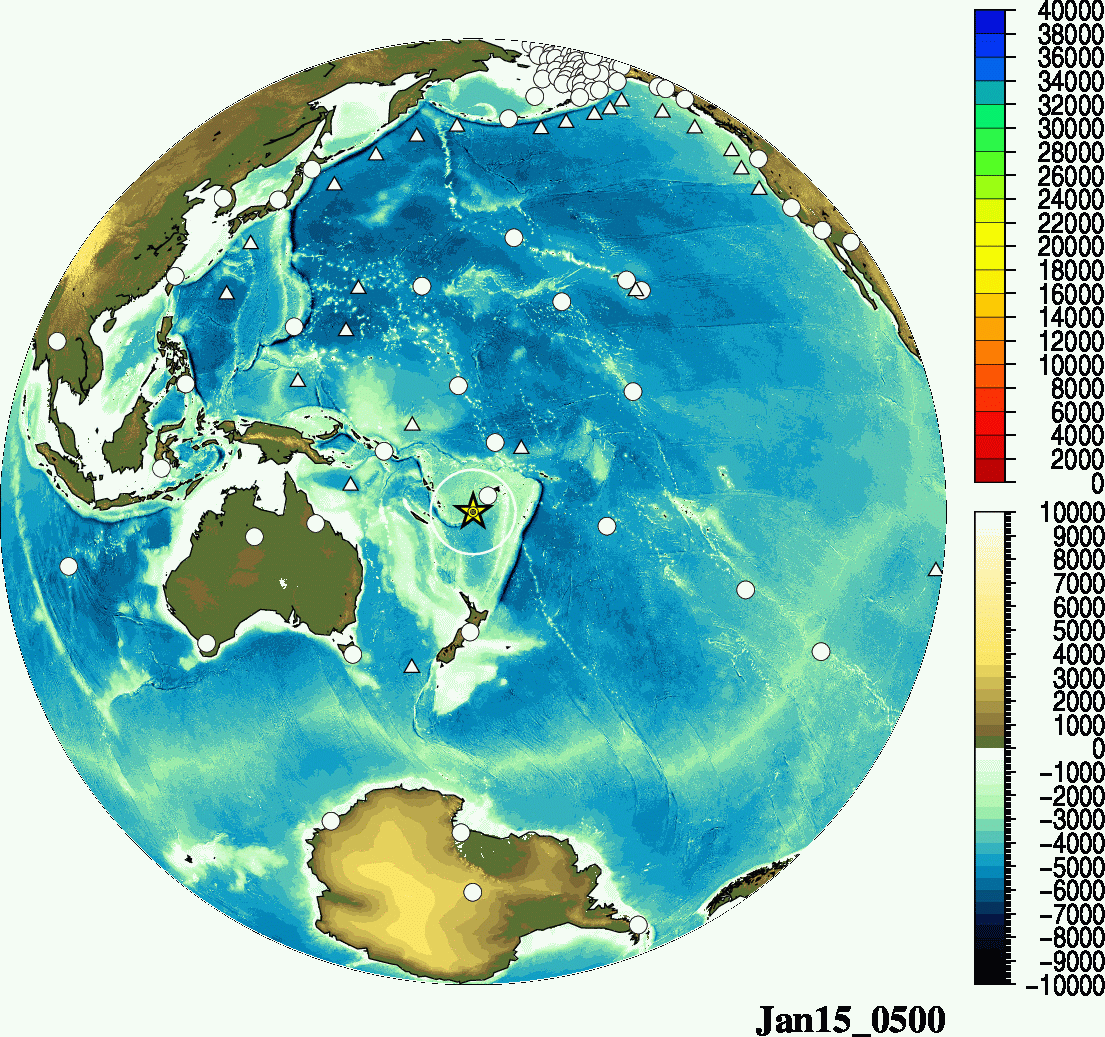Analysis of Hunga Tonga-Hunga Haapai volcano eruption in Tonga on 15 January 2022
A very large-scale eruption occurred at Hunga Tonga-Hunga Haapai volcano in Tonga at around 13:15 on January 15, 2022 (around 04:15 on the same day in UTC). A tsunami warning was announced in Japan as well, and tsunamis exceeding 1m were observed.
Dr. Masumi Yamada, Assistant Professor, Earthquake Source Mechanisms, Disaster Prevention Research Institute, Kyoto University, Japan; and Dr. Tung-Cheng Ho, Researcher, Climate Change Risk Prediction and Adaptation Research Unit, analyzed tsunami and volcanic shock waves using data from seismometers, barometers, and ocean bottom pressure gauge. As a result, it was found that the tsunami propagated concentrically from Tonga, and its speed was almost the same as the sound speed.
In addition, a long-period (50 minutes) pulse was recorded in the barometer record, and it was found that this pulse also propagated concentrically at the speed of sound.
Assuming that the tsunami is due to changes in sea level due to the collapse of the volcanic mountain body, the speed of the tsunami is slower than the speed of sound on average, so we cannot explain the observed value of this tsunami arrival time.
From this, it is considered that the extremely strong shock wave generated by the eruption of the volcano became an atmospheric Lamb wave and propagated on the earth's surface, and the change in atmospheric pressure caused by this shock wave changed the sea level and excited the tsunami.
Please click to review the report (it is a translation of the report written by Dr. Yamada in Japanese.)
Plot of the arrival time of the tsunami (marked with △) and the arrival time of the pulse recorded on the barometer (marked with ○). The white circles generally depict the wavefront of sound waves (v = 0.3km / s). The number in the lower right is UTC time (Japanese time-9 hours).
Tunami arrival (triangle) and shock wave arrival (circle).







